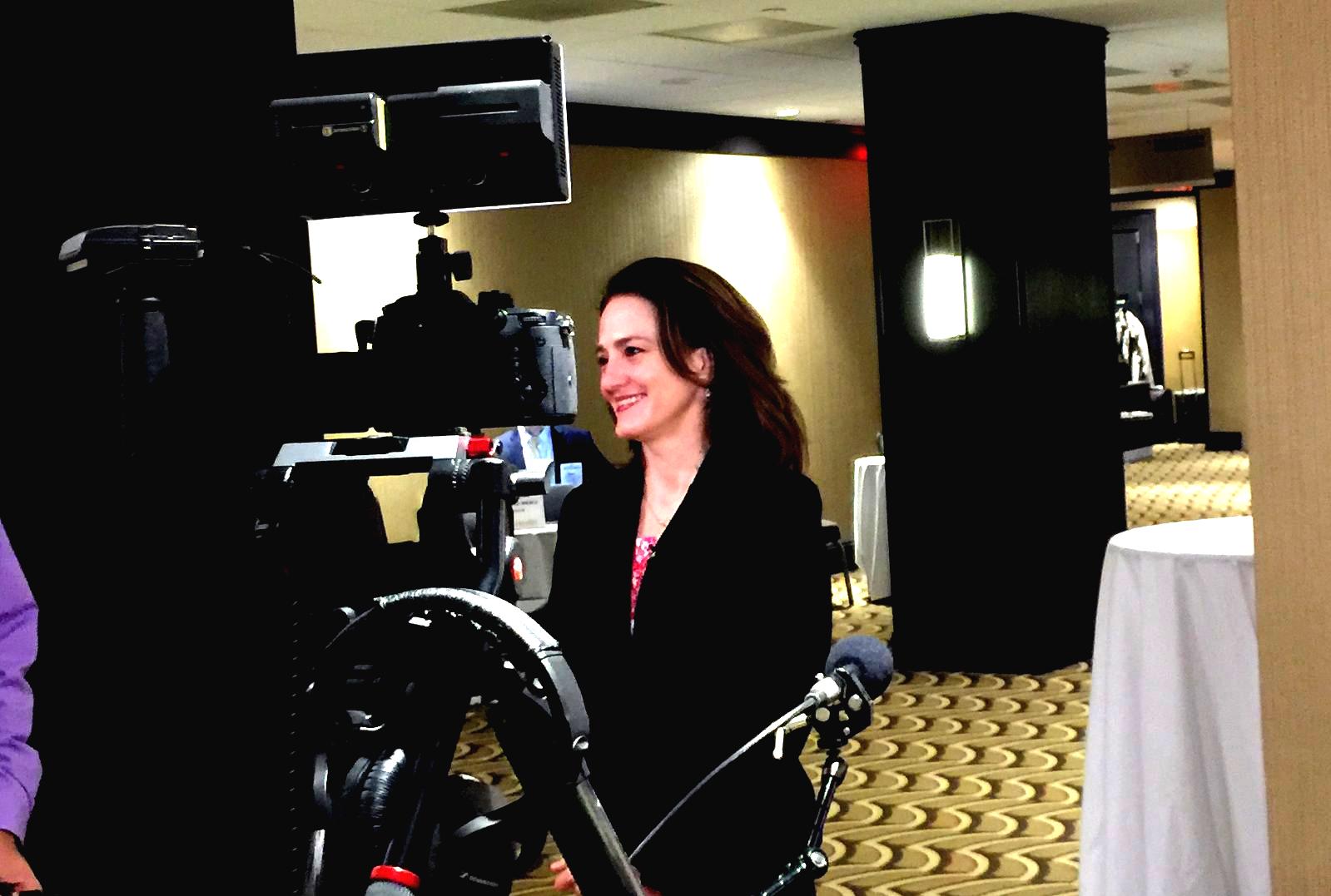
Carevive’s Chief Clinical Officer and Co-Founder, Carrie Stricker, PhD, RN, is featured in video interviews from the ACCC 44th Annual Meeting & Cancer Center Business Summit that are now live on OBR’s video library. In these short videos, she talks about challenges practices are facing when implementing patient engagement, the importance of patient-reported outcomes, and solutions to drive better capture the patient symptom experience.
Describe the importance of capturing all patient symptoms.
It its interesting the way this question is asked because, in fact, one of the biggest ways to engage patients in their cancer care is by ensuring they’re engaged from the very beginning and in the decision-making process. Shared decision-making essentially is incorporating the patient’s values preferences and goals at the time of any critical clinical decision. In cancer, we typically think about that as a treatment decision. A treatment choice may look very different based on if a patient, such as my father, when he was being treated for a locally advanced bladder cancer wanted to avoid certain toxicities or maintain a different level of function versus survival at all costs. Engaging the patient in that process and systematically understanding values, preferences and goals and the benefits versus risks of treatment is crucial. Doug Blaney and colleagues’ recent paper in JAMA oncology illustrated that that was in fact one of the key attributes uniquely differentiating high value cancer care delivery and practices versus intermediate or low value. We also know that carrying that forward across the rest of the care continuum into patients on treatment, post treatment survivorship, and even end-of-life care becomes just as if not more crucial. Engaging patients in reporting their own symptoms systematically, since more than half are typically missed by the cancer care team, is crucial as well. Same in survivorship. Patients being engaged to report on their symptoms and post-treatment survivorship in lung cancer, in fact, showed an improved time to diagnosis of recurrence and got that patient back into care sooner. Those are just some of the ways we have lots more work to do on the primary cancer care delivery science side and implementation science side to turn this into scalable practice strategies. And that’s one of the challenges that the cancer care community has that using systemic and best practices and applying people, process, and technology will help.
How do patient-reported outcomes differ from other endpoints and how they are contributing to outcomes?
What is Carevive doing to help patients engage in their cancer treatment strategy?
Carevive has been at the process and the technology of engaging patients across the care continuum now for over five years. It’s been our singular focus since myself and my co-founder, also an oncology nurse, founded the company back in early 2013. Our very first technology development and implementation of that technology to capture the patient’s voice through symptom assessment and reporting and then evidence-based symptom management strategies was done with some of the leaders in the field at Moffitt Cancer Center and at Billings Clinic. And over the ensuing five years we’ve developed a whole library of best practices through the work we’ve done with leading innovators in patient engagement in cancer care and in delivering value-based care around the country. Centers like University of Alabama at Birmingham, who demonstrated major savings in a Medicare model by integrating technology, process around patient engagement and navigation–use of the care team to optimize that. Centers like University of South Alabama Mitchell, who presented here at the ACCC Annual Meeting and Cancer Care Business Summit yesterday, showing that using Carevive’s treatment care planning technology that incorporates the patient voice into the treatment decision-making process and then engages them in self-management of that care and accesses resources and enables their navigators who engage with those at-risk patients. That process together of people navigators (embedded in the care team process as I just described what was done with the people) and technology the Carevive system showed a market reduction in total cost of care such that University of South Alabama Mitchell was able to achieve shared savings, a marked reduction in ED visits and in hospitalizations.
What is Carevive is doing to encourage patient engagement?
It’s so crucial to capture patient symptoms because we know that over 60% of hospitalizations-avoidable hospitalizations-for cancer care are due to unmanaged symptoms. Thanks to Deb Mayer and others this statistic has been illuminated now for several years. The next piece is if we leave it to clinicians like myself, a very engaged oncology nurse practitioner–even the best among us–dedicated a supportive care, still only capture 50% of patients symptoms. So if we leave it up to the very busy compressed clinical encounter we’re in trouble. Capturing that patient voice systematically, the patient reported symptoms through the use of technology to facilitate telephone calls…whatever it may be.. centers have to think about how they’re going to leverage people their staff and processes for gathering that within the care delivery continuum. And technology to ensure that they’re capturing patient symptoms across the trajectory if they want to achieve these high-value outcomes such as ED visit and hospitalization reduction to improve survival improve time on treatment and better quality of life for the patient. At the end of the day, isn’t that what it’s all about?



